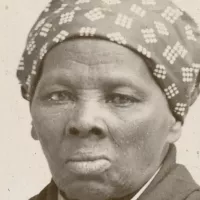Millennials, or Generation Y, are the demographic cohort born between the early 1980s and mid-1990s to early 2000s (typically 1981-1996). They follow Generation X and precede Generation Z and are primarily the children of Baby Boomers and parents of Generation Alpha.
1946: Army General Classification Test Analysis
In 1946, Jonathan Wai analyzed test scores from the Army General Classification Test and identified a consistent pattern: those with the highest test scores tended to pick the physical sciences and engineering as their majors, while those with the lowest were more likely to choose education.
1949: Mao Zedong's Rule
In 1949, Mao Zedong began his rule over China. A YouGov survey found that 42% of American millennials have never heard of him.
1950: End of demographic transition in Western Europe
Around 1950, Western Europe transitioned from high to low birth and death rates.
1950: Global Average Fertility Rate
In 1950, the global average fertility rate was 4.7.
1952: Selective Service College Qualification Test Analysis
In 1952, Jonathan Wai analyzed test scores from the Selective Service College Qualification Test and identified a consistent pattern: those with the highest test scores tended to pick the physical sciences and engineering as their majors, while those with the lowest were more likely to choose education.
1953: Vocabulary Levels Comparison by James R. Flynn
Intelligence researcher James R. Flynn discovered that back in the 1950s, specifically in 1953, the gap between the vocabulary levels of adults and children was much smaller than it is in the early twenty-first century.
1955: Study on Music Industry trends begins
Using artificial intelligence, Joan Serrà and his team at the Spanish National Research Council studied the massive Million Song Dataset and found that between 1955 and 2010, popular music has gotten louder, while the chords, melodies, and types of sounds used have become increasingly homogenized.
1960: Attitudinal shifts beginning in the 1960s
By the 1960s, people began moving from traditional and communal values towards more expressive and individualistic outlooks due to access to and aspiration of higher education, and to the spread of lifestyle values once practiced only by a tiny minority of cultural elites.
1965: Immigration and Nationality Act of 1965
In 1965, The Immigration and Nationality Act of 1965 (also known as the Hart–Celler Act), passed at the urging of President Lyndon B. Johnson, abolished national quotas for immigrants and replaced it with a system that admits a fixed number of persons per year based in qualities such as skills and the need for refuge.
1968: Rarity of Unmarried Mothers in America
In 1968, according to the Brookings Institution, unmarried mothers were extremely rare in America.
1971: U.S. Fertility Rates Fall Below Replacement Level Since 1971
Since 1971, U.S. fertility rates have fallen below the replacement level of 2.1.
1974: Birth Year Included in Initial 'Generation Y' Definition
The initial definition of 'Generation Y' by Advertising Age in August 1993 included individuals born in 1974, who were then teenagers aged 13-19.
1976: End of Mao Zedong's Rule
In 1976, Mao Zedong's rule over China ended. A YouGov survey found that 42% of American millennials have never heard of him.
1979: Introduction of the One-Child Policy in China
In 1979, China introduced the one-child policy, which has curbed the number of young people in the country and contributed to a gender imbalance.
1980: Start Year Range per Ipsos MORI
A report by Ipsos MORI describes the term 'Millennials' as a working title for the circa 15-year birth cohort born around 1980 to 1995.
1980: Birth Year of Oldest Millennials
A working paper analyzed the driving habits of the oldest millennials (born between 1980 and 1984).
1980: Possible start year for Millennials according to CNN
CNN reports that studies sometimes define millennials as born between 1980 and 2000.
1980: Raven's Progressive Matrices test start year
In 2009, Flynn analyzed the results of the Raven's Progressive Matrices test for British fourteen-year-olds from 1980 to 2008.
1980: Birth Year Included in Initial 'Generation Y' Definition
The initial definition of 'Generation Y' by Advertising Age in August 1993 included individuals born in 1980, who were then teenagers aged 13-19.
1980: Beginning of 'Geriatric Millennial' Range
The term Geriatric Millennial gained popularity in 2021 to describe those born in the beginning half of the 1980s, starting with 1980.
1981: Start Year for Millennials by Population Reference Bureau
A 2023 report by the Population Reference Bureau defines millennials as those born from 1981 to 1999.
1981: Survey regarding women's need for children
In 1981, a survey found that while more than half of people aged 65 and over thought that women needed children to be fulfilled, only 35% of those between the ages of 15 and 24 agreed.
1981: Beginning of Millennial Birth Years
In 1981, the generation known as Millennials, also called Generation Y or Gen Y, began to be born, following Generation X.
1981: Pew Research Center's Start Year for Millennials
In its definition of Millennials, the Pew Research Center starts the generation with people born in 1981.
1981: Start Year per Australian Bureau of Statistics
The Australian Bureau of Statistics uses the years 1981 to define millennials in a 2021 Census report.
1981: Beginning of Millennial Generation per Brookings Institution
The Brookings Institution defines the millennial generation as people born from 1981 to 1996.
1981: Start of Widely Accepted Millennial Birth Cohort
The year 1981 is considered the start of the "widely accepted" definition of Millennials by Jonathan Rauch of the Brookings Institution in 2018.
1982: Start of birthdates for Millenials.
Birth dates ranging from 1982 were used for Millenials.
1982: Birth Year Linked to the Millennium
Children born in 1982 were entering kindergarten, and the media began identifying their prospective link to the impending new millennium as the high school graduating class of 2000.
1982: Net Generation Birth Year
College students belonging to the Net Generation were born 1982 onwards.
1982: Generation Y Starting Year According to Ad Age
In 2003, Ad Age updated their definition of Generation Y, specifying the starting birth year as 1982.
1982: Start year for Millennials by U.S. Government Accountability Office
The U.S. Government Accountability Office defines millennials as those born between 1982 and 2000.
1983: Start year for Millennials identified by Sociologist Elwood Carlson
Sociologist Elwood Carlson identified the birth years of 1983 as start of the Millennial generation, who he calls "New Boomers".
1984: Birth Year of Oldest Millennials
A working paper analyzed the driving habits of the oldest millennials (born between 1980 and 1984).
1985: Increase in divorce rates in the European Economic Community
Member states of the European Economic Community saw a steady increase in divorce and out-of-wedlock births between 1960 and 1985.
1985: End of 'Geriatric Millennial' Range
The term Geriatric Millennial gained popularity in 2021 to describe those born in the beginning half of the 1980s, ending with 1985.
1987: Term 'Millennials' Coined
In 1987, authors William Strauss and Neil Howe coined the term "Millennials" around the time children born in 1982 were entering kindergarten.
1988: Older Millennials Birth Year
Older millennials, defined as those born in 1988 and earlier, came of age prior to the widespread usage of smartphones.
1989: Vietnam's population under 15 in 1989
In 1989, almost 40% of the Vietnamese population was 15 years of age or younger.
1989: Introduction of University Tuition Fees in Australia
In 1989, university tuition fees were introduced in Australia, leading to a considerable rise in the number of applicants.
1989: Younger Millennials Birth Year
Younger millennials, defined as those born in 1989 and later, were exposed to smartphones during their teen years.
August 1990: Peak of Echo Boom Birth Rates in the US
In August 1990, the echo boom's birth rates peaked in the United States, a period of increased birth rates often associated with the Millennial generation.
1990: Sweden's TFR reaches replacement level
In 1990, Sweden's total fertility rate (TFR) reached 2.14, up from 1.68 in 1980, largely due to economic output and family benefits.
1990: Divorce Rate Trends
In 1990, the divorce rate among Americans aged 25 to 39 was 30 per 1,000 married persons. For those aged 50 and up, the rate was 5 per 1,000 married persons, and for those aged 40 to 49, it was 18 per 1,000 married persons.
1991: Publication of 'Generations: The History of America's Future, 1584 to 2069'
In 1991, William Strauss and Neil Howe published their book "Generations: The History of America's Future, 1584 to 2069", which discussed the Millennial generation.
1991: Foreign-born residents in the United Kingdom at 6%
In 1991, the number of foreign-born residents in the United Kingdom stood at 6% of the population.
1992: Russia's Population Drop Between 1992 and 2002
Between 1992 and 2002, Russia's population dropped from 149 million to 144 million.
1992: Wharton School Survey on Undergraduates' Plans to Have Children
In 1992, a Wharton School survey revealed that 78% of women planned to eventually have children.
August 1993: Advertising Age Coined 'Generation Y'
In August 1993, an Advertising Age editorial coined the phrase "Generation Y" to describe teenagers of the day, then aged 13–19 (born 1974–1980), who were at the time defined as different from Generation X.
1994: End Year for Millennials by McCrindle Research
Australia's McCrindle Research uses the years 1980 to 1994 as Generation Y (millennial) birth years.
1995: Increase in Tuition Fees and Student Aid
In the 2008–09 academic year, Australia, Austria, Japan, the Netherlands, and New Zealand saw an increase in both the average tuition fees of their public universities for full-time domestic students and the percentage of students taking advantage of state-sponsored student aid compared to 1995.
1995: End Year per Australian Bureau of Statistics
The Australian Bureau of Statistics uses the years 1995 to define millennials in a 2021 Census report.
1996: Work Ethic Study
In 1996, a study on work ethic began, spanning 12 years and involving 1,860 participants to measure identification with work-ethic characteristics using the Multidimensional Work Ethic Profile (MWEP).
1996: End of Millennial Birth Years
In 1996, the generation known as Millennials, also called Generation Y or Gen Y, ended, preceding Generation Z.
1996: Pew Research Center's End Year for Millennials
In its definition of Millennials, the Pew Research Center ends the generation with people born in 1996.
1996: End of Millennial Generation per Brookings Institution
The Brookings Institution defines the millennial generation as people born from 1981 to 1996.
1996: End of Widely Accepted Millennial Birth Cohort
The year 1996 is considered the end of the "widely accepted" definition of Millennials by Jonathan Rauch of the Brookings Institution in 2018.
1998: Introduction of Tuition Fees in British Universities
In the autumn of 1998, a nominal tuition fee of £1,000 was introduced in British universities.
1999: End Year for Millennials by Population Reference Bureau
A 2023 report by the Population Reference Bureau defines millennials as those born from 1981 to 1999.
1999: Tony Blair's Goal for Higher Education
In 1999, Prime Minister Tony Blair introduced the goal of having half of young Britons having a university degree.
2000: Possible end year for Millennials according to CNN
CNN reports that studies sometimes define millennials as born between 1980 and 2000.
2000: Benchmark Year for Young Adults Living with Parents
In 2000, 23% of young adults aged 18–34 lived with their parents, compared to 32% in 2014, highlighting a significant increase over time.
2000: Publication of 'Millennials Rising: The Next Great Generation'
In 2000, William Strauss and Neil Howe published "Millennials Rising: The Next Great Generation", further exploring the characteristics of the Millennial generation.
2000: Baseline for Decreased Sexual Intercourse Study
In 2000, a study published in the Journal of the American Medical Association (JAMA) set the baseline for research into the decline of sexual intercourse in young Americans. In the period of 2000 to 2002, it was found that 18.9% of men aged 18 to 24 reported being sexually inactive.
2000: End of birthdates for Millenials.
In 2000, birth dates ranging from 1982 to 2000 were used for Millenials.
2001: Coining of "Digital Native"
In 2001, Marc Prensky coined the term "digital native" to describe students growing up with new technology.
2001: End year for Millennials identified by Sociologist Elwood Carlson
Sociologist Elwood Carlson identified the birth years of 2001 as the end of the Millennial generation, due to the "political and social challenges" that occurred after the 11 September terrorist acts.
2002: University Enrollment Among Millennials
According to the Pew Research Center, 53% of American millennials attended or were enrolled in university in 2002.
2002: Russia's Population Drop Between 1992 and 2002
Between 1992 and 2002, Russia's population dropped from 149 million to 144 million.
2002: Graduate Record Examination Analysis
Between 2002 and 2005, Jonathan Wai analyzed test scores from the Graduate Record Examination and identified a consistent pattern: those with the highest test scores tended to pick the physical sciences and engineering as their majors, while those with the lowest were more likely to choose education.
2002: Baseline for Decreased Sexual Intercourse Study
In 2002, a study published in the Journal of the American Medical Association (JAMA) set the baseline for research into the decline of sexual intercourse in young Americans. In the period of 2000 to 2002, it was found that 18.9% of men aged 18 to 24 reported being sexually inactive.
2003: STEM Dropout Rate
Between 2003 and 2009, 48% of students majoring in STEM dropped out of their programs, according to The Atlantic.
2003: Ad Age Moves Generation Y Starting Year to 1982
By 2003, Ad Age had moved their Generation Y starting year up to 1982, shifting the definition of the cohort.
2003: Invasion of Iraq
The 2003 invasion of Iraq is one of the "key political, economic and social factors" used by the Pew Research Center to define the Millennial generation.
2004: End of birthdates for Millenials.
In 2004, birth dates ranging from 1982 to 2004 were used for Millenials.
2005: Possible end year for Millennials according to author Neil Howe
Author Neil Howe, co-creator of the Strauss–Howe generational theory, defines millennials as "born 1982–2005?".
2005: Graduate Record Examination Analysis
Between 2002 and 2005, Jonathan Wai analyzed test scores from the Graduate Record Examination and identified a consistent pattern: those with the highest test scores tended to pick the physical sciences and engineering as their majors, while those with the lowest were more likely to choose education.
2005: Study on Religious Practices Among Young Adults
In 2005, a study involving 1,385 individuals aged 18 to 25 found that over half prayed regularly before meals, and about one-third engaged in weekly religious activities. Twenty-three percent did not identify as religious practitioners.
2005: University Fees Ban Struck Down in Germany
In 2005, judges in Karlsruhe, Germany, struck down a ban on university fees as unconstitutional.
2006: Wechsler IQ Test Vocabulary Subtest Gains
Between 1953 and 2006, adult gains on the vocabulary subtest of the Wechsler IQ test were 17.4 points whereas the corresponding gains for children were only 4.
2006: Increase in Overdose Deaths
From 2006 to 2015, overdose deaths among millennials increased by 108%. Drug addiction and overdoses adversely affect millennials more than prior generations.
2006: Publication of 'Generation Me' by Jean Twenge
In 2006, psychologist Jean Twenge authored the book Generation Me, categorizing millennials (and younger Gen X members) as "Generation Me" and attributing traits such as confidence and tolerance alongside entitlement and narcissism.

2006: Publication of 'Generation Me: Why Today's Young Americans Are More Confident, Assertive, Entitled – and More Miserable Than Ever Before'
In 2006, psychologist Jean Twenge described millennials as "Generation Me" in her book "Generation Me: Why Today's Young Americans Are More Confident, Assertive, Entitled – and More Miserable Than Ever Before."

2007: Connecting to the Net.Generation Publication
In 2007, Reynol Junco and Jeanna Mastrodicasa expanded on the work of William Strauss and Neil Howe to include research-based information about the personality profiles of millennials in their book "Connecting to the Net.Generation: What Higher Education Professionals Need to Know About Today's Students."

2007: The Great Recession of 2007-08
The Great Recession of 2007–08 began, affecting Italy's economy.
2007: Volunteer Activity Increase
Volunteer activity between 2007 and 2008 shows the millennial age group experienced almost three-times the increase of the overall population.
2008: Decline in English Majors
Data from the National Center for Education Statistics revealed that between 2008 and 2017, the number of people majoring in English plummeted by just over a quarter.
2008: Millennials as "Trophy Kids"
In 2008, author Ron Alsop referred to millennials as "Trophy Kids", reflecting a trend where mere participation is frequently rewarded, impacting expectations in corporate environments. Psychologist Jean Twenge notes that younger millennials who came of age after the 2008 financial crisis are more practical in their workplace expectations.
2008: Work Ethic Study Results
In 2008, results of a work ethic study showed that the main difference in work ethic sentiments arose between Generation X and millennials, with relatively small variances between the two generations and their predecessor, the Baby Boomers.
2008: Increase in Unmarried Mothers in America
In 2008, the Brookings Institution reported that the number of American mothers who never married had become much more common, particularly among the less educated, with significant differences based on education level. Unintended pregnancies were also higher among the less educated.
2008: Raven's Progressive Matrices test end year
In 2009, Flynn analyzed the results of the Raven's Progressive Matrices test for British fourteen-year-olds from 1980 to 2008.
2008: State-Sponsored Financial Aid Packages
In the 2008–09 academic year, virtually all Swedish students take advantage of state-sponsored financial aid packages from a government agency known as the Centrala Studiestödsnämnden (CSN).
2008: Volunteer Activity Increase
Volunteer activity between 2007 and 2008 shows the millennial age group experienced almost three-times the increase of the overall population.
2009: STEM Dropout Rate
Between 2003 and 2009, 48% of students majoring in STEM dropped out of their programs, according to The Atlantic.
2009: Flynn Analyzed Raven's Progressive Matrices test
In 2009, Flynn analyzed the results of the Raven's Progressive Matrices test for British fourteen-year-olds from 1980 to 2008.
2010: Millennial Workplace Expectations
In 2010, Myers and Sadaghiani published research in the Journal of Business and Psychology finding that millennials "expect close relationships and frequent feedback from supervisors" in the workplace.
2010: Millennial Shift Towards Public Service
In 2010, Myers and Sadaghiani's research, published in the Journal of Business and Psychology, noted increased millennial participation in the Peace Corps and AmeriCorps.
2010: Pew Research Center Study on Millennials and Religion
In 2010, a Pew Research Center study revealed that among millennials aged 18 to 29, only 3% identified as "atheists" and 4% as "agnostics," while 68% identified as "Christians". Overall, 25% of millennials were "Nones" and 75% were religiously affiliated.
2010: Social Media Withdrawal Symptoms Study
In 2010, research published in the Elon Journal of Undergraduate Research claimed that students who quit social media showed withdrawal symptoms similar to those of drug addicts quitting stimulants.
2010: Missed Deadline for Higher Education Goal
Prime Minister Tony Blair introduced the goal of having half of young Britons having a university degree in 1999, though the 2010 deadline was missed.
2010: Singapore's Birth Rate Stabilizes
Since the 1980s, Singapore's birth rate has been falling below the replacement level of 2.1 before stabilizing by during the 2000s and 2010s.
2010: Study on Music Industry trends ends
Using artificial intelligence, Joan Serrà and his team at the Spanish National Research Council studied the massive Million Song Dataset and found that between 1955 and 2010, popular music has gotten louder, while the chords, melodies, and types of sounds used have become increasingly homogenized.
2011: Millennials Attitudes
In 2011, Universum's survey highlighted millennials attitudes towards corporate social responsibility, leading to data depicting that 64% of millennials would take a 60% pay cut to pursue a career path aligned with their passions.
2011: UCLA Data on STEM Attrition
In 2011, data collected by UCLA showed that 60% of science and engineering students, including pre-medical students, changed their majors or failed to graduate, which was twice the attrition rate of all other majors combined.
2011: Analysis of Sociosexual Tendencies and Religiousness
In 2011, social psychologists Jason Weeden, Adam Cohen, and Douglas Kenrick analyzed survey data and discovered that sociosexual tendencies play a significant role in determining religiousness, more so than other social variables. Religiousness facilitates seeking high-fertility, marriage-oriented, heterosexual monogamous relationships, especially in the context of the United States. The study does not necessarily apply to other countries.
2012: Ad Age Concedes 'Millennials' is a Better Name than 'Gen Y'
In 2012, Ad Age "threw in the towel by conceding that Millennials is a better name than Gen Y,", acknowledging the widespread adoption of the term 'Millennials'.
2012: Pew Research Study on Irreligion in the U.S.
In 2012, a Pew Research study indicated that 32% of Americans aged 18–29 were irreligious, compared to older age groups, showing a growing trend towards irreligion.
2012: Wharton School Survey on Undergraduates' Plans to Have Children
In 2012, a Wharton School survey revealed that 42% of women planned to eventually have children.
2012: Decline in Humanities Graduates
In 2012, the number of graduates in the humanities began to decline, with 234,737 graduates. This trend continued in subsequent years, leading to schools relinquishing these subjects, dismissing faculty, or closing entirely.
2012: Introduction of Higher Student Fees in the UK
In 2012, £9,000 worth of student fees were introduced in the UK, but the number of people interested in pursuing higher education continued to grow.
2012: Estimated Number of U.S. Millennials in 2012
In a 2012 Time magazine article, it was estimated that there were approximately 80 million U.S. millennials.
2013: Time Magazine's Cover Story: 'Millennials: The Me Me Me Generation'
In 2013, Time magazine ran a cover story titled "Millennials: The Me Me Me Generation", reflecting perceptions of millennials as self-centered.
2013: YouGov Poll on Religious Attendance and Beliefs
In 2013, a YouGov poll in Britain revealed that 56% of 18-24 year olds had never attended a place of worship except for weddings or funerals, 25% believed in God, and 38% did not believe in God or a spiritual power. Furthermore, 14% viewed religion as a "cause of good" while 41% saw it as "the cause of evil". Also, a British Social Attitudes Survey found that 71% of British 18–24 year-olds were not religious, with 3% affiliated to the Church of England, 5% Catholics, and 14% belonging to other Christian denominations.
2013: Increased Engagement with Mixed Martial Arts
In 2013, a survey found that engagement with mixed martial arts had increased in the 21st century and was more popular than boxing and wrestling for Americans aged 18 to 34 years old, in contrast to those aged 35 and over who preferred boxing.
2013: Survey on Britons aged 18 to 24
In 2013, a survey of almost a thousand Britons aged 18 to 24 found that 62% had a favorable opinion of the British Broadcasting Corporation (BBC) and 70% felt proud of their national history.
2013: Millennials Preference
In 2013, the National Society of High School Scholars (NSHSS) survey depicted a preference among millennials to work for companies engaged in the betterment of society.
2013: Decline in First Marriages in China
In 2013, the number of people getting married for the first time in China was 23.8 million, according to the Chinese National Bureau of Statistics.
2013: Student Debt in Sweden
In 2013, the ratio of debt to expected income after graduation for Swedes was about 80%.
March 2014: Pew Research Center Report on Millennials in Adulthood
In March 2014, the Pew Research Center reported that millennials are "detached from institutions and networked with friends". The report noted millennials are more optimistic about America's future, despite facing higher levels of student loan debt and unemployment.
2014: SAT Math and Verbal Analysis
In 2014, Jonathan Wai analyzed test scores from the SAT Math and Verbal and identified a consistent pattern: those with the highest test scores tended to pick the physical sciences and engineering as their majors, while those with the lowest were more likely to choose education.
2014: Millennial Adherence to Corporate Social Responsibility
In 2014, a Brookings publication highlighted millennials' adherence to corporate social responsibility.
2014: Generation Y Label as Placeholder
In 2014, a past director of data strategy at Ad Age said to NPR "the Generation Y label was a placeholder until we found out more about them."
2014: "Generation Like" PBS Frontline Episode
In 2014, the PBS Frontline episode "Generation Like" discussed millennials, their dependence on technology, and the commoditization of the social media sphere.
2014: Millennials Comprise 27% of the U.S. Population
In 2014, the Pew Research Center estimated that millennials comprised 27% of the U.S. population.
2014: Pew Research Center on Millennials in Europe
In 2014, the Pew Research Center found that Millennials in Europe tended to be pessimistic about the future direction of their countries, though there were significant differences based on the health of their countries' economies.
2014: Urban Institute Research Projecting Lower Marriage Rates
Research by the Urban Institute in 2014 projected that millennials will have a lower marriage rate compared to previous generations. By age 40, 31% of millennial women will remain single, approximately twice the share of single Gen X counterparts. Data also showed an increase in young adults living with parents.
2015: Analysis of the European Values Study
According to a 2015 analysis of the European Values Study, "the majority of young respondents in Europe claimed that they belonged to a Christian denomination" and "in most countries, the majority of young people believe in God".
2015: Further Drop in Humanities Graduates
By 2015, the number of graduates in the humanities had dropped to 212,512. This decline in humanities graduates led many schools to relinquish these subjects, dismiss faculty members, or close completely.
2015: Canadian Federal Election Youth Turnout
Canadian millennials played a crucial role in the election of Justin Trudeau. The 2015 federal election saw a surge in youth voter turnout, influenced by Trudeau's progressive campaign promises.
2015: Increase in Overdose Deaths
From 2006 to 2015, overdose deaths among millennials increased by 108%. Drug addiction and overdoses adversely affect millennials more than prior generations.
2015: USC US-China Institute Conference in Shanghai
In 2015, a conference was held in Shanghai by the University of Southern California's US-China Institute, examining and contrasting Chinese and American millennials, including their preferences on marriage, childbearing, child raising, life and career ambitions, and attitudes towards volunteerism and activism.
2015: Microsoft Study on Phone Usage by Young Adults
In 2015, a study by Microsoft found that 77% of respondents aged 18 to 24 said that when nothing is occupying their attention, the first thing they do is reach for their phone.
2015: Jonathan Wai's Analysis of Test Scores
In 2015, educational psychologist Jonathan Wai analyzed average test scores from multiple sources and identified a consistent pattern: those with the highest test scores tended to pick the physical sciences and engineering as their majors, while those with the lowest were more likely to choose education.
2015: Estimated Number of U.S. Millennials in 2015
In 2015, the United States Census Bureau, using birth dates ranging from 1982 to 2000, stated the estimated number of U.S. millennials was 83.1 million people.
2015: Divorce Rate Trends
In 2015, the divorce rate among Americans aged 25 to 39 dropped to 24 per 1,000 married persons. Conversely, among those aged 50 and up, the divorce rate increased to 10 per 1,000 married persons, and for those aged 40 to 49, it rose to 21 per 1,000 married persons.
2016: Marriage Rate Among Russian Millennials
As of 2016, 54% of Russian millennials were married.
2016: Millennials as Majority of Veteran Population
As of 2016, millennials are the majority of the total veteran population. According to the Pentagon in 2016, 19% of millennials are interested in serving in the military, and 15% have a parent with a history of military service.
2016: Median Age of U.S. Population
As of 2016, the median age of the U.S. population was younger than that of all other rich nations except Australia, New Zealand, Cyprus, Ireland, and Iceland. This is due to the higher fertility rate of American baby boomers.
2016: Data Collection on Sexual Intercourse Among Young Americans
Between 2016 and 2018, a study published in the Journal of the American Medical Association (JAMA) found that 30.9% of men aged 18 to 24 reported being sexually inactive, a significant increase from the period between 2000 and 2002.
2016: Millennial Mothers in America
By 2016, the number of American women of the millennial generation who had given birth at least once reached 17.3 million.
2016: Public Transit Usage
In 2016, 21% of U.S. adults aged 18 to 21 took public transit on a daily, almost daily, or weekly basis.
2016: Rescission of the One-Child Policy in China
In 2016, China rescinded the one-child policy, but workplace discrimination against women with families remains commonplace, influencing young women's decisions regarding marriage.
2016: U.S. Study on Church Attendance and Religious Beliefs by Generation
In 2016, a U.S. study found that church attendance during young adulthood was 41% among Generation Z, 18% for millennials, 21% for Generation X, and 26% for the Baby Boomers when they were at the same age. A survey showed that the proportion of atheists and agnostics was 21% among Generation Z, 15% for millennials, 13% for Generation X, and 9% for Baby Boomers. It also indicated varying perspectives on the relationship between science and the Bible across generations.
2016: Pew Research Study on Delayed Adulthood Rites of Passage
In 2016, a study from Pew Research showed millennials delay some activities considered rites of passage of adulthood with data showing young adults aged 18–34 were more likely to live with parents than with a relationship partner, an unprecedented occurrence since data collection began in 1880.
2016: Millennial Car Purchases
In 2016, millennials purchased more cars and trucks than any living generation except the Baby Boomers. Millennials overtook Baby Boomers in car ownership in California that year.
2016: Age of new arrivals in Australia in 2016
In the fiscal year of 2016, 84% of new arrivals in Australia were below 40 years of age, compared to 54% of those already in the country.
2016: United Kingdom European Union membership referendum
The 2016 United Kingdom European Union membership referendum (Brexit) occurred.
2016: Millennials' Electoral Power Peak
The electoral power of the Millennial generation peaked in 2016.
2017: Age Range in BBC Report
A 2017 BBC report has also referred to the 1980-2000 age range in reference to that used by National Records of Scotland in relation to the Millennial generation.
2017: Study Found Decline in Narcissism Among Young People
A study published in 2017 in the journal Psychological Science found a small decline in narcissism among young people since the 1990s, countering some earlier claims about millennials.
2017: Survey of American Millennials on Caloric Activities
According to a 2017 survey of 30,999 Americans, approximately half of U.S. millennials participated in high caloric activities, while approximately one quarter were sedentary.
2017: Veteran Status Among Millennial Men
According to the Pew Research Center, in 2017, only 4% of millennial men (ages 21 to 36) are veterans.
2017: Higher Education Attainment in England
By 2017, almost half of young people in England had received higher education by the age of 30. Also, as of 2017, women were more likely to attend or to have attended university than men, by 55% against 43%.
2017: Further Decline in English Majors
Data from the National Center for Education Statistics revealed that between 2008 and 2017, the number of people majoring in English plummeted by just over a quarter, while philosophy and religion fell 22%, and foreign languages dropped 16%.
2017: Vietnam's fertility rate drops to 1.95 in 2017
In 2017, Vietnam's fertility rate dropped to 1.95, and 23% of the population was 15 years of age or younger.
2017: Demographics of Millennials
In 2017, fewer than 56% of millennials were non-Hispanic whites, compared with more than 84% of Americans in their 70s and 80s, 57% had never been married, and 67% lived in a metropolitan area.
2017: Research Suggests Nearly Half of UK 18 to 34 Year Olds Attended Live Music
In 2017, research suggested nearly half of 18 to 34 year olds living in the UK had attended a live music event in the previous year.
2017: U.S. Fertility Rate in 2017
In 2017, the U.S. fertility rate fell to 1.765.
2017: Global Average Fertility Rate
In 2017, the global average fertility rate was 2.4, a decrease from 4.7 in 1950.
February 2018: Survey on Holocaust Awareness
In February 2018, a survey of 1,350 individuals revealed that 66% of American millennials did not know what Auschwitz was, 41% incorrectly claimed that 2 million Jews or fewer were killed during the Holocaust, and 22% had never heard of the Holocaust.
2018: Projected Overweight and Obesity Rates
According to a 2018 report from Cancer Research UK, millennials in the United Kingdom are on track to have the highest rates of overweight and obesity. More than 70% of millennials will be overweight or obese by ages 35–45.
2018: Popularity of Soccer Among Millennials
As of 2018, association football and Major League Soccer was the second most popular sport among millennials aged 18 to 34 in the United States.
2018: Immigration Surge in the United Kingdom
As of 2018, immigration surged and has not fallen in the United Kingdom since 1991.
2018: Data Collection on Sexual Intercourse Among Young Americans
Between 2016 and 2018, a study published in the Journal of the American Medical Association (JAMA) found that 30.9% of men aged 18 to 24 reported being sexually inactive, a significant increase from the period between 2000 and 2002.
2018: Children Living with Married Parents by Income Quintile
In 2018 in the United States, 94% of children from families in the highest income quintile lived with married parents, compared to 74% of middle-class children and 35% of children from the bottom quintile.
2018: Italians Moving Abroad
In 2018, 150,000 Italians moved abroad in search of educational and economic opportunities.
2018: Complaints about the Misuse of 'Millennial' Term
In 2018, Emily St. James complained that the word "millennial" had become meaningless, being applied incorrectly to teenagers and members of Generation X.
2018: Brookings Institution on Millennial Definition
In 2018, Jonathan Rauch of the Brookings Institution wrote that "generations are squishy concepts", but the 1981 to 1996 birth cohort is a "widely accepted" definition for millennials.
2018: Report on Declining Sexual Intercourse Among Young Adults
In 2018, Kate Julian reported in The Atlantic that countries tracking sexual behavior, including Australia, Finland, Japan, the Netherlands, Sweden, the United Kingdom, and the United States, all experienced a decline in the frequency of sexual intercourse among teenagers and young adults. This trend exists despite the availability of online dating platforms, contraception, and more relaxed attitudes towards sex outside of marriage.
2018: Singapore's Birth Rate Reaches Low Point
In 2018, Singapore's birth rate reached 1.14, the lowest since 2010 and one of the lowest in the world, indicating the ineffectiveness of government incentives like the baby bonus.
2018: Vietnam's Median Age in 2018
In 2018, Vietnam's median age was 26 and rising, with a life expectancy of 76, the second highest in Southeast Asia.
2018: Animated television show Bluey released
In 2018, the animated television show "Bluey" premiered, captivating Millennial adults with its positive portrayal of family life, fueling nostalgia, and helping them heal emotional wounds from childhood.
2018: Physical Activity Council's Participation Report
The Physical Activity Council's 2018 Participation Report found that in the U.S., millennials were more likely than other generations to participate in water sports such as stand-up paddling, board-sailing and surfing.
2019: Study on Childlessness Among Swedish Men
A 2019 study revealed that among 191 Swedish men aged 20 to 50, 39 were not fathers and did not want to have children in the future (20.4%). The desire to have children was not related to education, birth country, sexual orientation or relationship status. Some men "passively" chose not to have children because their life was already good without them and due to less social pressure.
2019: Increase in Heart Attacks Among Young Americans
According to a 2019 report from the American College of Cardiology, the prevalence of heart attacks among Americans under the age of 40 increased by an average rate of two percent per year in the previous decade.
2019: Global Population Growth Rate Decline
According to the United Nations, the global annual rate of population growth has been declining and dropped to about one percent in 2019.
2019: College Debt and Gap Year Consideration
As of 2019, the total college debt has exceeded US$1.5 trillion, and two out of three college graduates are saddled with debt. A 2019 survey by TD Ameritrade found that over 18% of millennials (and 30% of Generation Z) said they have considered taking a gap year between high school and college.
2019: Significant Drop in First Marriages in China
By 2019, the number of people getting married for the first time in China dropped to 13.9 million, a 41% decrease from 2013, according to the Chinese National Bureau of Statistics. The marriage rate also declined to 6.6 per 1,000 people, a 33% drop compared to 2013.
2019: Top Countries for High-Skilled Workers
In 2019, KDM Engineering found that the top five countries for international high-skilled workers are Switzerland, Singapore, the United Kingdom, the United States, and Sweden.
2019: Pew Research Center Poll on Dating Difficulties
In 2019, a Pew Research Center poll found that approximately 47% of American adults believed dating had become more difficult in the last decade, while 19% found it easier. A majority of men and women agreed that the #MeToo movement posed challenges for the dating market. Many single adults were not actively seeking a romantic relationship, citing priorities in life, preference for being single, and pessimism about success.
2019: UK Study on Declining Sexual Activity
In 2019, a study by the London School of Hygiene and Tropical Medicine found a similar trend of declining sexual activity in the United Kingdom. Fear of infection due to the COVID-19 pandemic is expected to further fuel this trend.
2019: Wealth and Income Premiums for Post-Secondary Education
In 2019, research published by the Federal Reserve Bank of St. Louis demonstrated that wealth premium has weakened to point of statistical insignificance and income premium declined to historic lows for families with heads of household with post-secondary education but born after 1980.
2019: Millennials Outnumber Baby Boomers
In 2019, the Pew Research Center estimated that millennials (born between 1981 and 1996) outnumbered baby boomers (born between 1946 and 1964) for the first time, with 72.1 million millennials compared to 71.6 million baby boomers.
March 2020: Report on Childlessness in Belgium
Quest reported in March 2020 that, in Belgium, 11% of women and 16% of men between the ages of 25 and 35 did not want children.
2020: Increased Remote Work Due to Pandemic
From 2000-2020, economic activities tended to concentrate in the large metropolitan areas. The pandemic in 2020 led to an increase in remote work, more so in developed countries, aided by technology.
2020: Study on Decreased Sexual Intercourse Among Young Americans
In 2020, a study published in the Journal of the American Medical Association (JAMA) found that young Americans had sexual intercourse less frequently during the first two decades of the twenty-first century. The study indicated that the share of sexually inactive men aged 18 to 24 increased from 18.9% between 2000 and 2002 to 30.9% between 2016 and 2018. Factors such as unemployment, part-time jobs, student status, and economic dependence on parents contribute to this trend.
2020: Millennials' Electoral Share Shrinks
In 2020, millennials' share of the electorate began to shrink as Generation Z became eligible to vote. However, the number of foreign-born millennials continues to increase as they become naturalized citizens, with 10% of American voters born outside the country by the 2020 election.
2021: Gender Imbalance in China
As of 2021, China has over 30 million "surplus" men due to the traditional preference for sons and the one-child policy.
2021: Opioid Overdose Deaths
In 2021, millennials and older zoomers represented a majority of all opioid overdose deaths in the United States. The leading cause of death for people aged 25–44 were drug overdoses.
2021: Australian Bureau of Statistics Defines Millennials
In 2021, the Australian Bureau of Statistics used the years 1981 to 1995 to define millennials in a Census report.
2021: Popularity of 'Geriatric Millennial' Term
In 2021, the term 'Geriatric Millennial' gained popularity to describe those born in the beginning half of the 1980s between 1980 and 1985.
2022: U.S. Census Publication Notes Millennial Definition
In 2022, a U.S. Census publication noted that millennials are "colloquially defined as the cohort born from 1981 to 1996", using this definition in a breakdown of Survey of Income and Program Participation (SIPP) data.
2023: Movie Barbie release and Taylor Swift's Eras Tour
In 2023, Millennial fans significantly contributed to the commercial success of the movie "Barbie" and musician Taylor Swift's Eras Tour.
2023: Population Reference Bureau's Millennial Definition
In 2023, a report by the Population Reference Bureau defines millennials as those born from 1981 to 1999.
2025: Australia's Working Age Population Expected to Grow Until 2025
Australia's working-age population is expected to grow until about 2025.
2025: Generation Alpha Population
By 2025, the population of Generation Alpha is expected to reach two billion people worldwide.
2050: United Nations Population Projection
The United Nations revised their projection of the human population in 2050 down to 9.7 billion due to faster-than-expected declines in fertility rates in the developing world.
2069: Mentioned Future Year in 'Generations'
2069 is mentioned as a future year in the book 'Generations: The History of America's Future, 1584 to 2069' by William Strauss and Neil Howe.
Mentioned in this timeline

Taylor Swift is an American singer-songwriter recognized for her significant...

Justin Trudeau served as the rd Prime Minister of Canada...

Uber Technologies Inc is a multinational transportation company headquartered in...
The United States of America is a federal republic located...
California is a U S state on the Pacific Coast...
Lyft Inc is a US-based transportation company providing a range...
Trending

Derwin James Jr is a professional football safety for the Los Angeles Chargers He played college football at Florida State...

12 days ago Kayce Dutton's Journey: 'Y: Marshals' Trailer Reveals New Beginnings After 'Yellowstone'

4 months ago Ketel Marte's Absence and Day Off Requests Cause Frustration Among Diamondbacks Teammates

27 days ago Stallone Protected Himself with Body Armor for Snipes' Intense 'Demolition Man' Performance.

6 months ago Pascal Siakam Shines in NBA Finals, Inspiring Africa and Sharing Lessons.

Dallas Goedert is an American football tight end currently playing for the Philadelphia Eagles in the NFL He was drafted...
Popular
Matt and Ross Duffer known as the Duffer Brothers are...
Aftyn Alyssa Behn is an American politician currently serving as...

Candace Owens is an American conservative political commentator and author...

Ilhan Omar is an American politician currently serving as the...

XXXTentacion born Jahseh Dwayne Ricardo Onfroy was a controversial yet...

Harriet Tubman was a pivotal American abolitionist and social activist...

